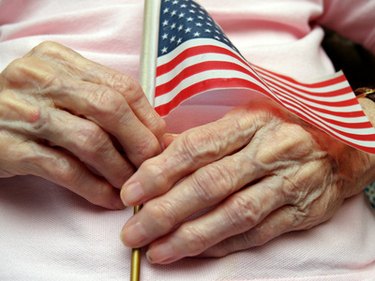
Joint pain occurs as a symptom of many autoimmune diseases, in some conditions as a primary defining symptom of the disease, and, in others, as a secondary symptom that occurs in more advanced or longstanding cases, or as one of an array of possible manifestations. Burning joint pain is distinct from a stiff and aching quality of joint pain and can indicate nerve involvement, metabolic insufficiency or pronounced inflammation with swelling and elevated temperature around a joint.
Rheumatoid Arthritis
Video of the Day
Severe inflammation in rheumatoid arthritis causes joint erosions and deformities, which can lead to abnormal positioning of the bones and soft tissues, resulting in direct pressure on nerves. Carpal tunnel syndrome, pressure on the median nerve of the wrist, and tarsal tunnel syndrome, compression of the tibial nerve in the foot are more prevalent in rheumatoid arthritis patients. Additionally, a chronic low-grade fever can be present in rheumatoid arthritis, which can contribute to a burning quality of joint pain.
Video of the Day
Autoimmune Hypothyroidism
Carpal tunnel syndrome and tarsal tunnel syndrome also occur in autoimmune hypothyroidism, due to swelling of the soft tissues around the median and tibial nerves, according to the Thyroid Info website. Additionally, waste products of metabolism and chronic inflammation are sources of irritation to pain receptors and can register a burning pain.
Psoriatic Arthritis
This is an autoimmune disease that affects the skin and also causes an erosive form of arthritis. Knees, ankles and feet are commonly affected. Swelling can be extensive, with the toes and fingers taking on a characteristic thickening effect known as "sausage digits." The degree of swelling makes the joints hot and painful. Inflammation of the tendons and cartilage can occur in this disease, as well, according to the Mayo Clinic. At the cartilages where the ribs meet the breastbone, difficulty in breathing can result. If the Achilles tendon is involved, walking is impaired.
Scleroderma
This is a widespread connective tissue disease that causes fibrosis, or hardening and thickening of the connective tissues in multiple organs. In the circulatory system, high blood pressure results. A similar situation in the tubules of the kidneys also causes elevation in blood pressure, as well as kidney failure. Painful and stiff joints result when joint connective tissues are affected. Reynaud's phenomenon, characterized by chronic decreased blood flow to the hands from spasm of the blood vessels supplying the hands, occurs in 90 percent of cases, and carpal tunnel syndrome, with burning sensation into the wrists and hands, is common in scleroderma, according to the Mayo Clinic.
Is this an emergency? If you are experiencing serious medical symptoms, please see the National Library of Medicine’s list of signs you need emergency medical attention or call 911.